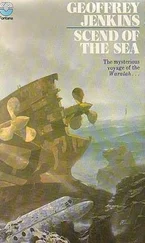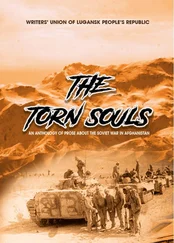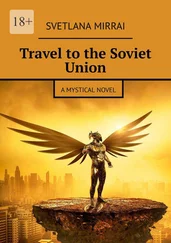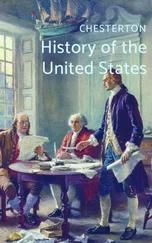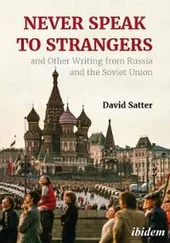During 1924–5 he continued this work by assembling a doctrine, drawn selectively from the dead man’s writings, which he published as The Foundations of Leninism . Two special institutes were set up, the Marx-Engels Institute and the Lenin Institute, to gather and study the heritage of the founding fathers of the new ideology, and a journal, Bolshevik , was founded to publish the results. Claiming for himself the home ground of these ideological temples, Stalin could assail the ideas of opponents of the new orthodoxy, not just as misguided, but as somehow illegitimate. Traditional religions would have used the term ‘heresy’; Stalin called them ‘deviations’.
The first issue on which Stalin tried thus to isolate and discredit his opponents was the fundamental question of the nature of the revolutionary state and the nation it claimed to represent. NEP had initially been launched in the expectation that it constituted a ‘retreat’, a temporary concession to capitalism in order to restore the economy until such time as socialist revolutions could break out elsewhere and backward, war-torn Soviet Russia receive fraternal help from outside. By the autumn of 1923, however, with the failure of yet another attempt at a Communist coup in Germany, it was becoming clear that, for the foreseeable future, Russia was going to be on its own. Did that mean that the Soviet state should indefinitely prolong a ‘provisional’ economic system, or did it mean that the Russians should abandon hope of external help, and buckle down to build socialism on their own?
Almost ever since the October revolution, some Bolsheviks had tacitly accepted the proposition that, for the moment at least, proletarian internationalism must mean Soviet (and even Russian?) patriotism, since Russia was the only country in which a ‘proletarian’ state had been established. We have seen this at the time of the Brest-Litovsk Treaty and during the Soviet-Polish war. At the same time many non-Bolsheviks took a partly compatible view: that the Bolsheviks had succeeded in holding on to power because, in circumstances which threatened the disintegration of the Russian Empire, they had proved themselves to be the party best able to hold that empire together. This stream of thought crystallized in 1920 in the form of smenovekhovstvo (from the collection of essays, Change of Landmarks , which appeared in that year). Nikolai Ustryalov, its leading exponent, now in emigration in Kharbin, argued that the defeat of the Whites had demonstrated that the Bolsheviks were now the only truly Russian national force: they had succeeded in holding Russia together against all the attempts of foreigners and non-Russian nationalities to dismember her. His case was strengthened by the reincorporation of the remaining non-Russian nations into the new Soviet Union, and by the introduction of NEP, which seemed to show that, in social and economic terms as well, the new Russian state was becoming more like the old one. In a famous image, Ustryalov likened Soviet Russia to a radish–‘red outside and white inside’.
This point of view found some support among émigrés, but even more perhaps inside Russia itself. It was close to the outlook of probably the majority of former Imperial Army officers who had joined the Red Army. Many of the ‘bourgeois specialists’ would also have sympathized with it: indeed, Jeremy Azrael, the historian of the managerial stratum in Soviet society, goes so far as to call smenovekhovstvo ‘the ideology of the specialists’. Some writers (especially the ‘fellow travellers’) and clergy took a similar view. At a time when émigré books were still published inside Russia, and links between Soviet citizens and émigrés were strong, these ideas, while not universally accepted (especially in emigration) did play a part in reconciling the traditional professional classes to the new system.
Obviously the Soviet leadership could not simply take over smenovekhovstvo, since it was avowedly non-socialist and anti-internationalist. But there were good reasons why they should evolve their own version of Russian patriotism. First, because they needed to appeal to the specialists on whom they still depended so much: and it was cheaper and more effective to gain their willing compliance than to rely on compulsion alone. Secondly, even the party apparatus itself, now growing so fast under the guidance of Stalin’s card-indexers, could not be expected indefinitely to work enthusiastically for a system that was only provisional. They too needed to feel that they were doing something constructive, ‘building socialism’, even if only in Russia, and not just marking time till the world revolution, now apparently receding, should at last break out.
It was with them above all in mind that Stalin began in 1924 to reconsider the party’s theoretically absolute commitment to international revolution. In an article entitled ‘October and Trotsky’s theory of permanent revolution’, published in the newspapers in December 1924, he first raised the possibility that socialism might be achieved in one country alone, even if that country were less developed economically than its neighbours which had remained capitalist. Such a victory he deemed ‘perfectly possible and even probable’.
It is significant that this idea, backed with scanty but authentic quotations from Lenin, was directed against Trotsky. Stalin’s article was in fact a salvo in the power struggle for Lenin’s succession. The theoretical differences between Stalin and Trotsky were mainly ones of emphasis: even Stalin conceded that the ‘final victory’, as distinct from just the ‘victory’, of socialism required an international proletarian community. But Stalin depicted Trotsky as someone who lacked confidence in Soviet Russia, and in the ‘alliance of the proletariat and the toiling peasantry’, which had brought about the socialist revolution in Russia, and could, according to Stalin, now make possible the construction of a socialist society. This was a classic example of a weapon Stalin was to use increasingly: exaggerating and distorting the views of his opponents, and applying crude labels to them, as though from a position of unique and guaranteed rectitude. ‘Trotskyism’, ‘the left deviation’, ‘the right deviation’–these gradually became equivalent in Stalin’s rhetoric to ‘non-Leninism’, and hence to ‘anti-Leninism’, which ‘objectively’ meant supporting the imperialists. By stages, in fact, Stalin was able to insinuate that all his opponents were nothing less than enemies of the soviet system.
At any rate, as far as ‘socialism in one country’ was concerned, there was at least as much justification in Lenin’s writings for Trotsky’s assertions that primacy should be given to international revolution. But it was Stalin who managed to occupy the temple, to represent his interpretation as the only truly Leninist one, and to gain the institutional backing for it. The Fourteenth Party Conference, in April 1925, resolved that ‘in general the victory of socialism ( not in the sense of final victory) is unconditionally possible in one country’.
Thereby ‘socialism in one country’ became official party doctrine, and its implications had to be absorbed. The economic ones were the most pressing. It was generally assumed that ‘building socialism’ meant developing Russia’s industry. Lenin had hoped to do this by attracting foreign concessions to the country, recognizing frankly that Russia needed help from abroad, even from capitalists. But, although a few significant deals were concluded, foreign concessions still accounted for only 0.6 per cent of industrial output in 1928. This was scarcely surprising, in view of the fact that the Bolsheviks had deliberately defaulted on all past Russian debts: it took them many years to regain a reputation for financial probity.
Читать дальше

